The Clark Fork River is a river that stretches across western Montana and a small part of northern Idaho. In total, it flows north and north-west for 360 miles, until it enters Pend Oreille Lake in Idaho. At that point, the river is called the Pend Oreille River.
The Clark Fork is the largest river in Montana by volume. It is also one of the longest rivers in Montana. This 280-mile river in Montana is a popular destination for fishing, rafting, kayaking, and other water recreation – with at least 35 species of mammals living around the river, 230 species of birds that pass through the area, and a wide variety of fish species that live in the river itself. This wildlife habitat and important waterway has had a vital role in human life for thousands of years. However, for over 100 years, the river has been threatened by pollution and land degradation. In 2023, the Clark Fork River made its way onto a list of the top 10 most endangered rivers in the United States.
Even today, the Clark Fork River is still an important part of Montana’s ecosystem. But is it safe to swim in it? This article covers key details about the Clark Fork River, the wildlife that lives in and near it, and whether you can safely take a plunge into its cold waters. You will also learn why advocates are calling for the U.S. Environmental Protection Agency to act to preserve the river. Let’s dive in to learn together now!
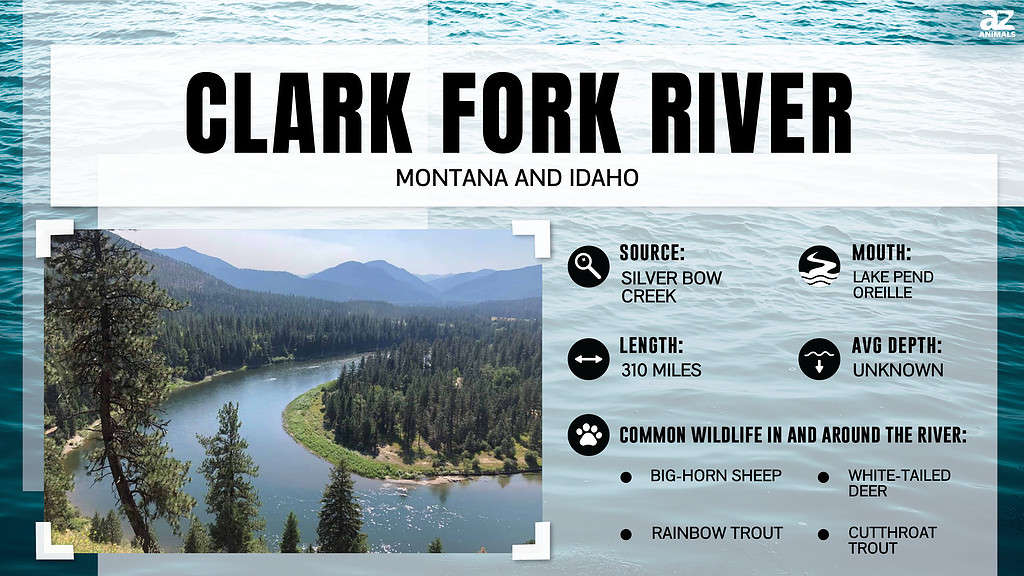
About the Clark Fork River
The Clark Fork River stretches across 280 miles of Montana into northern Idaho and enters Pend Oreille Lake. It is the headwaters of the Columbia River Basin, originating at Grants-Kohrs Ranch where Silver Bow Creek and Warm Springs Creek come together near the town of Butte Creek. From there, it flows to the Idaho border. In the Grant-Kohrs Ranch National Historic Site, the river plays a critical role in the ranch’s operations and the habitat of its wildlife inhabitants.
The Clark Fork River and its tributaries are long and narrow, winding their way through the mountains and valleys. It cuts a course near Glacier National Park as well as multiple wildlife preserves.
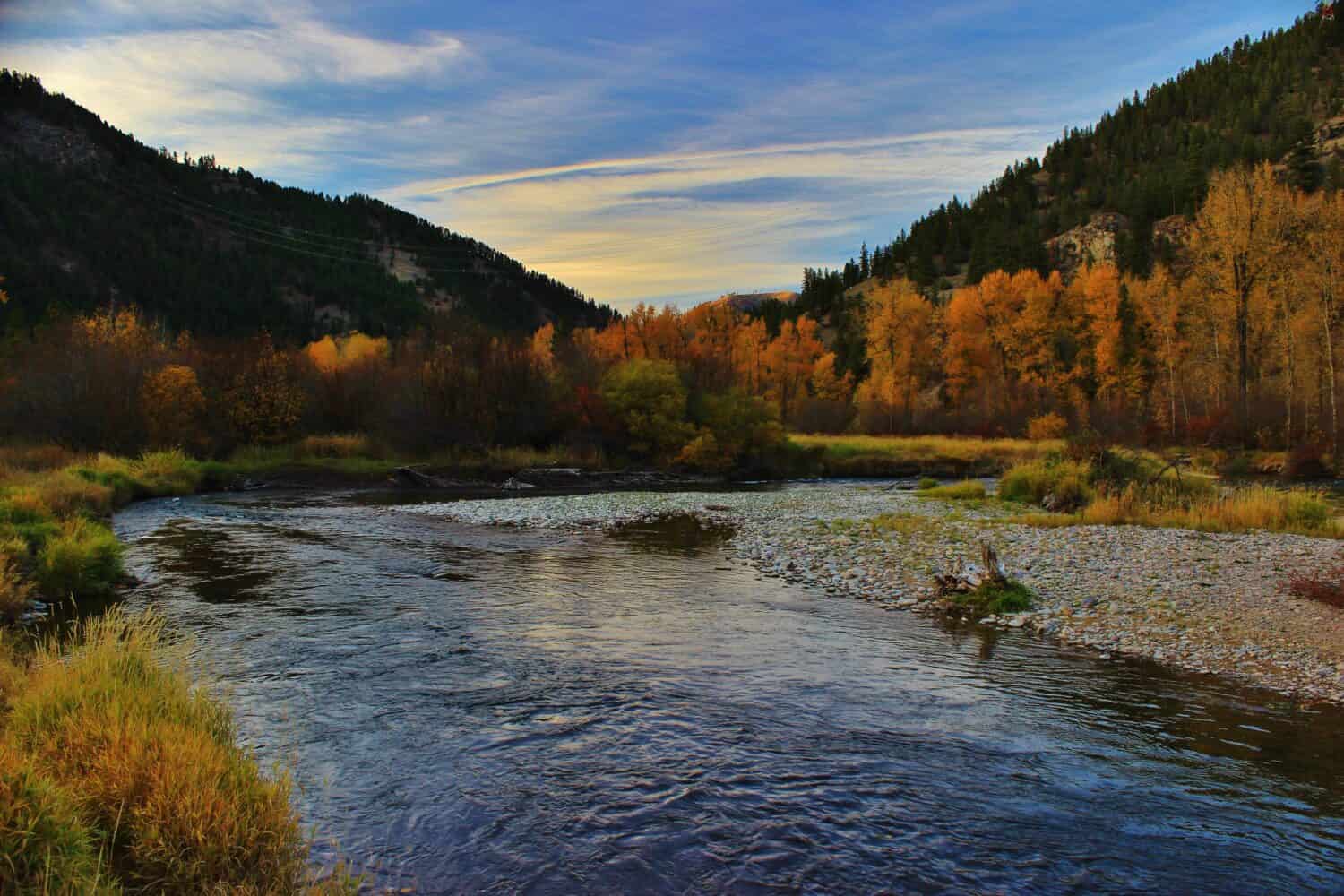
A scenic view of the Clark Fork River near Missoula, Montana.
©Patti Anderson/Shutterstock.com
History of the Clark Fork River
This river helped sustain Native tribes in the area now known as Montana for hundreds of years. When the Lewis and Clark expedition traveled through the area in the 1800s, the river was renamed after William Clark. Since the 19th century, the river now known as the Clark Fork River has been vital to ranch life, providing water for livestock and agriculture. The Rancher and explorer John “Johnny” Grant built a home and ranch near the river in the 1860s and used water from the river to create an irrigation system for his ranch. This area would eventually become the Grant-Kohrs National Ranch Historic Site.
However, unfortunately, starting in the 1880s, heavy metal mining and smelting operations in nearby towns led to significant land degradation and pollution of the river. This was furthered by a pulp mill that created chemical discharge into the river in the second half of the 20th century and well into the 21st century. In fact, the damage from the pollution was so great that the river was nearly destroyed. Today, environmental restoration efforts led by community coalitions and scientists have worked hard to restore and sustain the river. These efforts are ongoing.
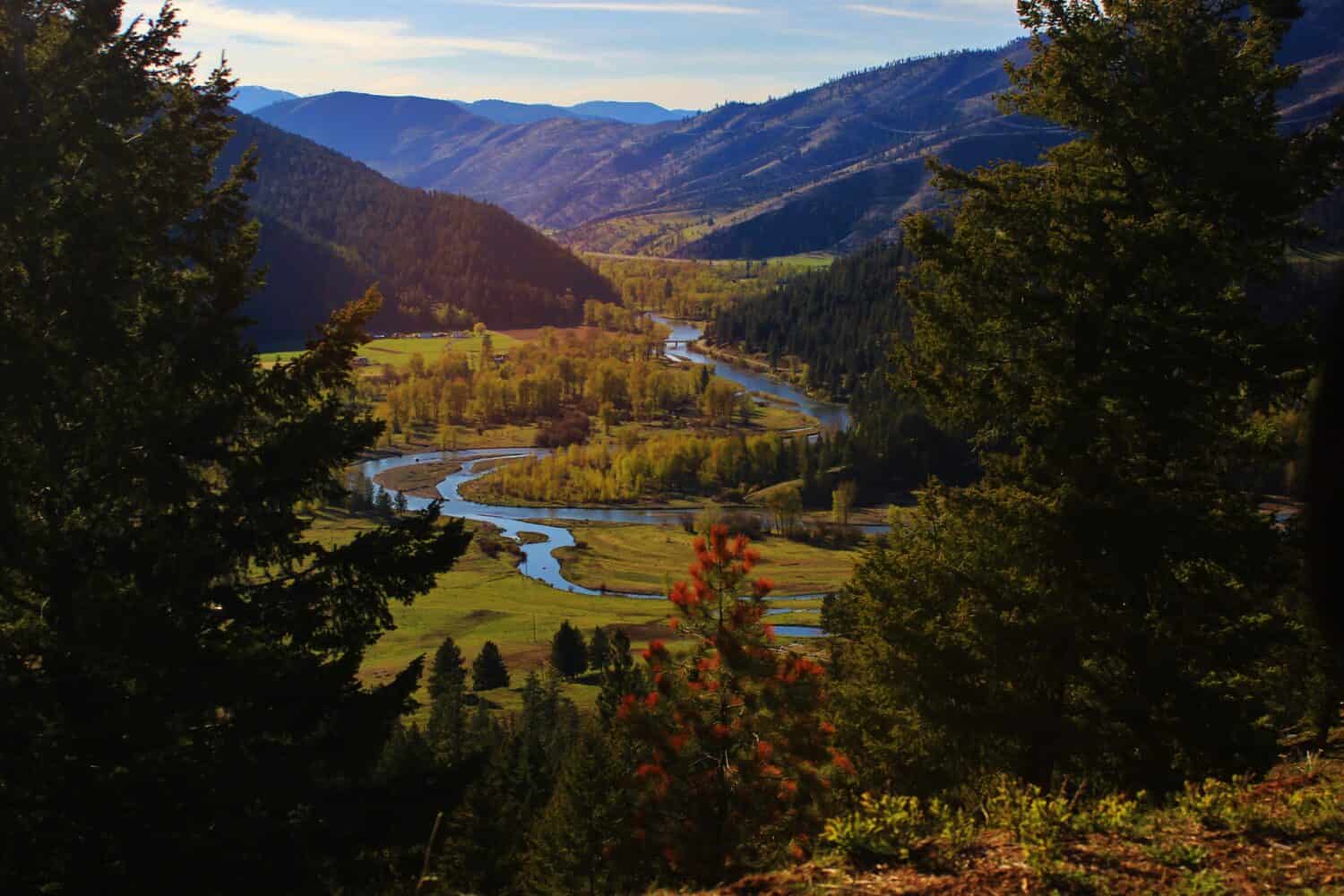
Clark Fork River is in Bearmouth, Montana.
©Patti Anderson/Shutterstock.com
Can you swim in the Clark Fork River?
With its long history of contamination and yet, remaining beauty, many people wonder whether it is safe to swim in the Clark Fork River. While you may swim in the Clark Fork River, there are a few hazards to be aware of. Beyond swimming, Missoula locals say that floating the river is a summertime staple activity. “Floating” involves grabbing an inner tube and floating peacefully down the river.
While the river is a popular destination for fly fishers, kayakers, and boaters, there are a few hazards to be aware of before jumping headfirst into the river or going tubing for the first time.
Safety Warnings
Before you swim or float down the river, grab some waterproof shoes to protect your feet from the rocky bottom. You may also choose to float one of the two most popular routes: You can end your float at Caras Park, or continue on to Silver Park. However, you do not want to float down the river past Silver Park. Check out the Downtown River Map to plan your floating adventure.
Pollution
However, in the 1880s, a mining boom began that would significantly pollute the river and cause an environmental disaster in the surrounding area. Mining and smelting work in Butte and Anaconda, Montana, during the 1800s, created a lot of waste. A flood in 1908 brought toxic materials into the Clark Fork River, contaminating the groundwater for 120 miles and the land’s soil in a devastating way. In the years following, more of these toxic sediments were brought downstream.
By the 1930s, the area around Grant-Kohrs Ranch was the site of exposed mining waste, dying plants, and bare soil. Then, between 1957 and 2010, a pulp mill created pulp from woodchips and created bleached materials for cardboard boxes. This entire process led to many chemicals and hazardous substances being discharged directly into the Clark Fork River. While waste management areas have temporarily held off much of the sludge, these remain problematic. A lack of maintenance for some of the barriers between the river and the major settling ponds has also threatened the river – if there were a significant flood, these pollutants would end up in the river to devastating consequences. This possibility remains a looming threat.
Since 1985, the Clark Fork Coalition has worked to restore the waters of the Clark Fork Basin. The coalition uses science-based and community-driven strategies to heal the Clark Fork River area from toxic mine waste, de-watering, disconnected tributaries, and damaged and eroded river banks. Other advocates are calling for action by the U.S. Environmental Protection Agency. In 2018, work also began to remove contaminated soil, stabilize eroded river banks, and introduce new vegetation in the Grant-Kohrs Ranch land.
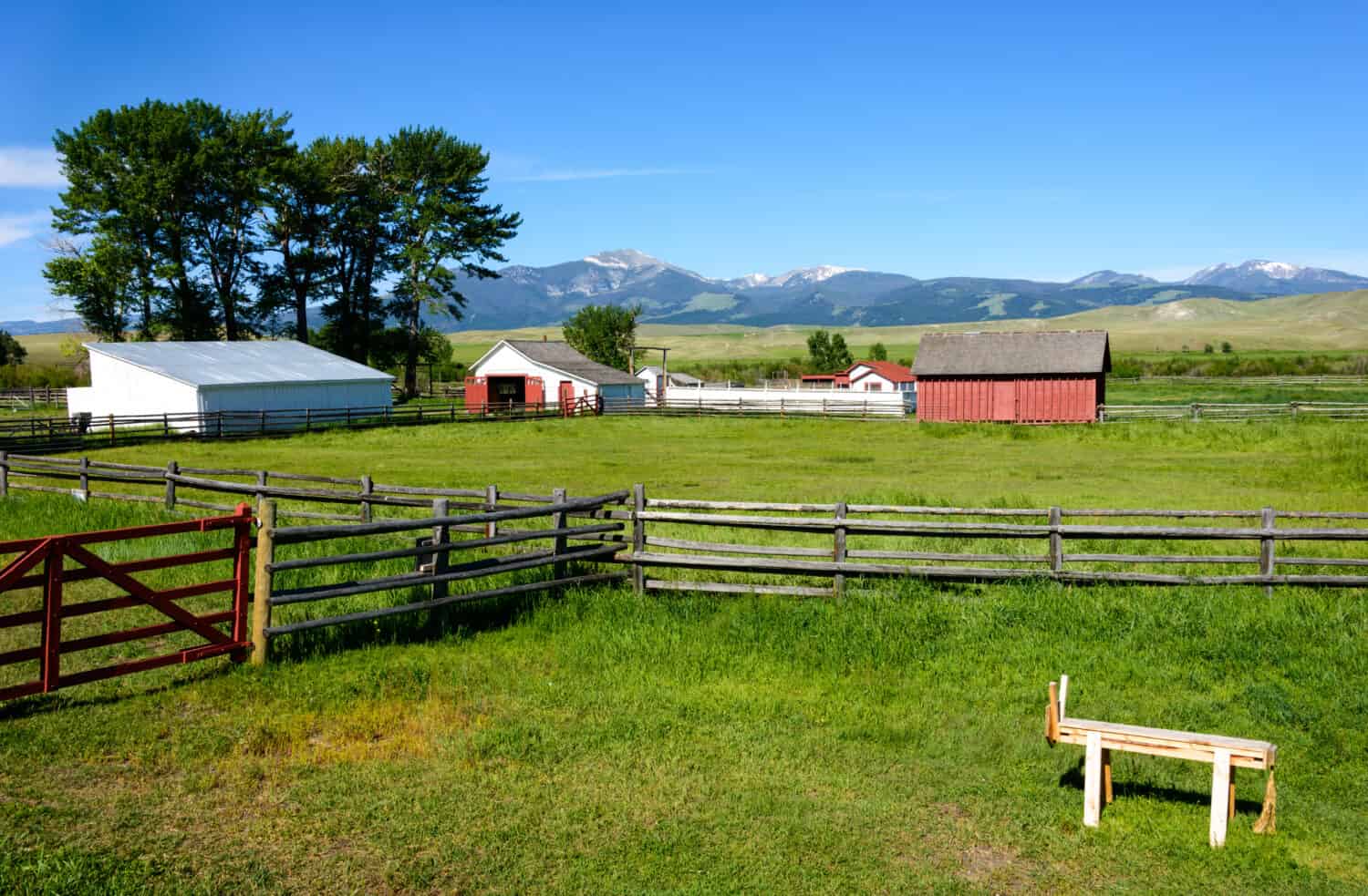
The Grant-Kohrs National Ranch Historic Site is important land at the headwaters of the Clark Fork River.
©Zack Frank/Shutterstock.com
Fish
The Clark Fork River is a fly fisherman’s destination. In Montana, the river is full of rainbow, cutthroat, and endangered bull trout. Many fly fishermen visit the river each year to fish for these trout, which can grow to trophy sizes over 20 inches long!
Currently, the expert guidance recommends that people do not eat fish species from the Clark Fork River’s confluence with the Bitterroot River, which is west of Missoula, to the confluence with the Flathead River, near the town of Paradise. To be safe, you can follow Montana Fish, Wildlife, and Parks’ advice to not eat any fish from the Clark Fork River below Missoula, since there may be too many pollutants for safe consumption.
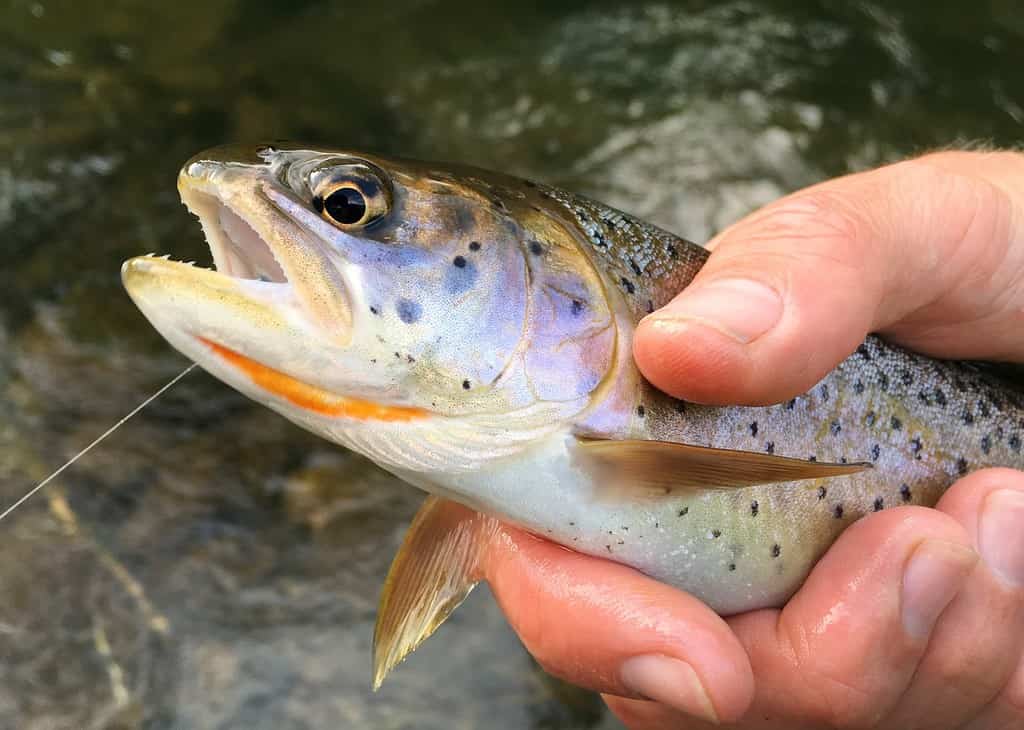
The Clark Fork River is a fisherman’s paradise and contains many species of trout, including the Cutthroat Trout known for its distinctive orange-colored throat slash.
©Matt Jeppson/Shutterstock.com
Other Hazards
During the spring, the higher levels of the water and rushing speeds can cause people tubing or rafting the Clark Fork River to flip. This can put them in danger of hypothermia, since the river’s water temperatures may be as low as 56 degrees Fahrenheit. For that reason, many local experts advise avoiding water recreation in the Clark Fork River until later in the year. The Clark Fork River can run fast, cold, and high, making it dangerous for swimming. It is a good idea to check the water levels and expert guidance before jumping in.
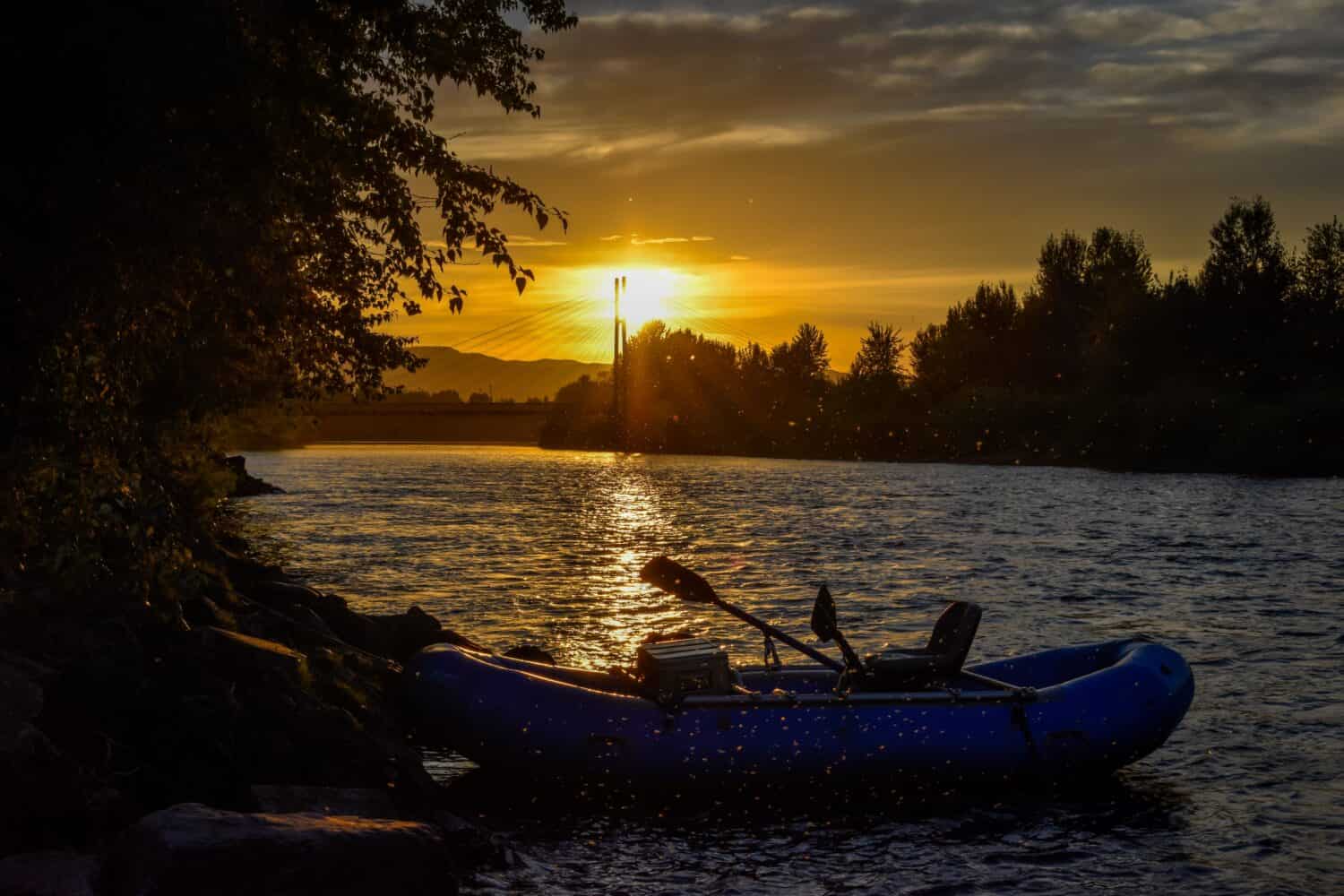
Rafting, kayaking, or floating down the Clark Fork River are popular activities. However, follow expert guidelines to maintain your safety, especially during the spring when the waters are high.
©Jeff Wheels/Shutterstock.com
Animals Living Near the Clark Fork River
Apart from the fish and creatures living within the Clark Fork River, the river itself contributes to an important habitat for birds and many mammals in the Missoula Valley.
If you walk alongside the river banks, you will likely see mammals such as beavers, elk, muskrats, river otters, bighorn sheep, moose, white-tailed deer, coyotes, and other animals. You could also look for birds such as ospreys, woodpeckers, willow flycatchers, geese, bald eagles, ducks, red-naped sapsuckers, kingfishers, and more.
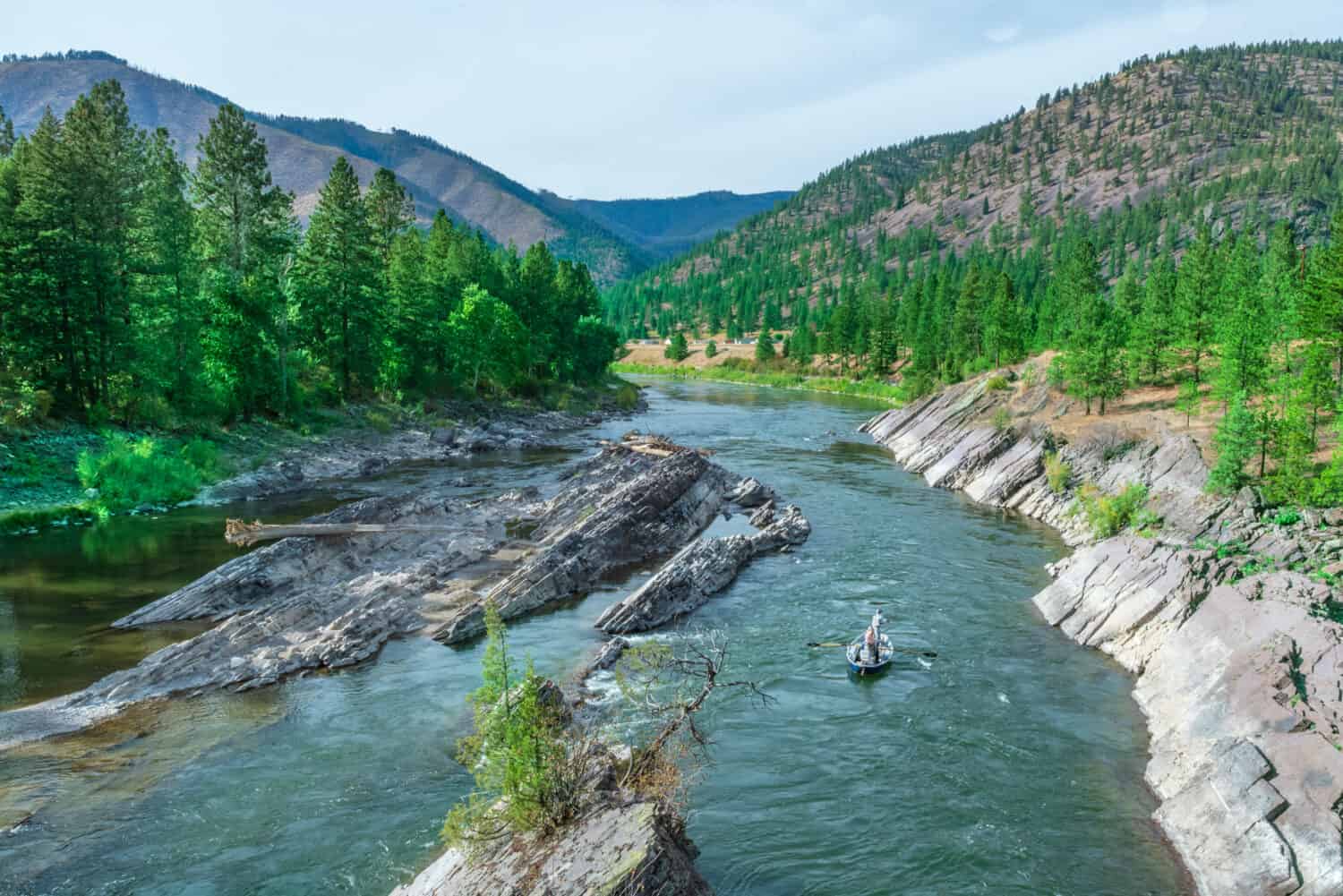
Flyfishing the Clark Fork River can be a great way to enjoy the river’s scenic views and wildlife.
©Ansel B/Shutterstock.com
The photo featured at the top of this post is © md hess/Shutterstock.com
Thank you for reading! Have some feedback for us? Contact the AZ Animals editorial team.






